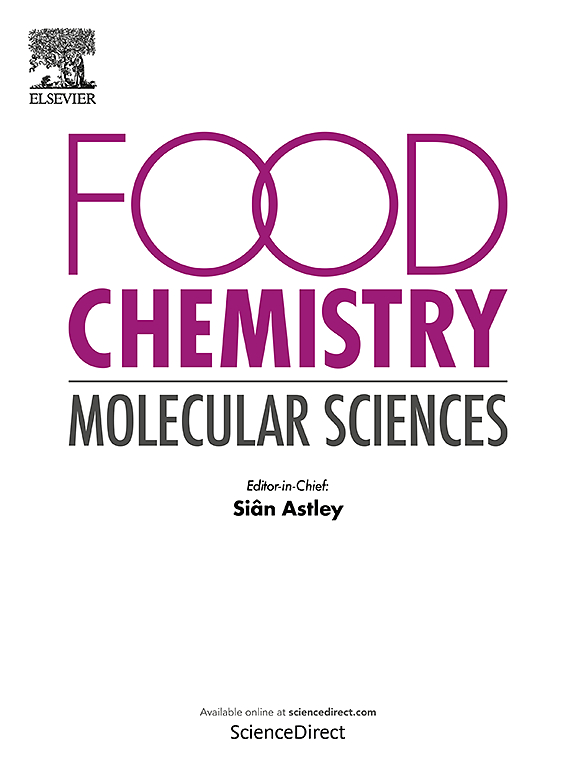Multi-omics analysis unravels the dynamics of flavor profile in ‘Queen Nina’ berries and the regulatory mechanism underlying volatile esters
IF 4.1
Q2 FOOD SCIENCE & TECHNOLOGY
引用次数: 0
Abstract
‘Queen Nina’ is a popular grape variety, but the fruit flavor profile and its evolution and regulatory mechanism remain unclear. The flavor profile of ‘Queen Nina’ was systematically investigated by analyzing the soluble sugars, organic acids, free amino acids, and aroma volatiles at 6 different stages. A total of 55 aroma volatiles were identified, with esters being the predominant volatiles in mature berries. The flavor profile of ‘Queen Nina’ was elucidated by constructing a flavor radar chart based on the results of OAV, which identified 5 volatiles as reliable indicators of berries ripening. Additionally, we identified 29 genes associated with esters metabolism and reported for the first time the involvement of the CXE gene family in aroma esters decomposition in grapes. The results contribute to a more comprehensive understanding of the dynamics underlying the flavor profile of ‘Queen Nina’, thereby providing novel insights into enhancing the grape aroma.

多组学分析揭示了“尼娜女王”浆果风味特征的动态变化以及挥发性酯的调节机制
“尼娜女王”是一种受欢迎的葡萄品种,但其果实风味特征及其演变和调控机制尚不清楚。通过对6个不同阶段的可溶性糖、有机酸、游离氨基酸和香气挥发物的分析,系统地研究了“Queen Nina”的风味特征。共鉴定出55种香气挥发物,其中酯类是成熟浆果中主要的挥发物。通过构建风味雷达图,阐明了“Queen Nina”的风味特征,并确定了5种挥发物作为浆果成熟的可靠指标。此外,我们鉴定了29个与酯代谢相关的基因,并首次报道了CXE基因家族参与葡萄香气酯分解。研究结果有助于更全面地了解“尼娜女王”的风味特征,从而为提高葡萄香气提供新的见解。
本文章由计算机程序翻译,如有差异,请以英文原文为准。
求助全文
约1分钟内获得全文
求助全文
来源期刊

Food Chemistry Molecular Sciences
Agricultural and Biological Sciences-Food Science
CiteScore
6.00
自引率
0.00%
发文量
83
审稿时长
82 days
期刊介绍:
Food Chemistry: Molecular Sciences is one of three companion journals to the highly respected Food Chemistry.
Food Chemistry: Molecular Sciences is an open access journal publishing research advancing the theory and practice of molecular sciences of foods.
The types of articles considered are original research articles, analytical methods, comprehensive reviews and commentaries.
Topics include:
Molecular sciences relating to major and minor components of food (nutrients and bioactives) and their physiological, sensory, flavour, and microbiological aspects; data must be sufficient to demonstrate relevance to foods and as consumed by humans
Changes in molecular composition or structure in foods occurring or induced during growth, distribution and processing (industrial or domestic) or as a result of human metabolism
Quality, safety, authenticity and traceability of foods and packaging materials
Valorisation of food waste arising from processing and exploitation of by-products
Molecular sciences of additives, contaminants including agro-chemicals, together with their metabolism, food fate and benefit: risk to human health
Novel analytical and computational (bioinformatics) methods related to foods as consumed, nutrients and bioactives, sensory, metabolic fate, and origins of foods. Articles must be concerned with new or novel methods or novel uses and must be applied to real-world samples to demonstrate robustness. Those dealing with significant improvements to existing methods or foods and commodities from different regions, and re-use of existing data will be considered, provided authors can establish sufficient originality.
 求助内容:
求助内容: 应助结果提醒方式:
应助结果提醒方式:


